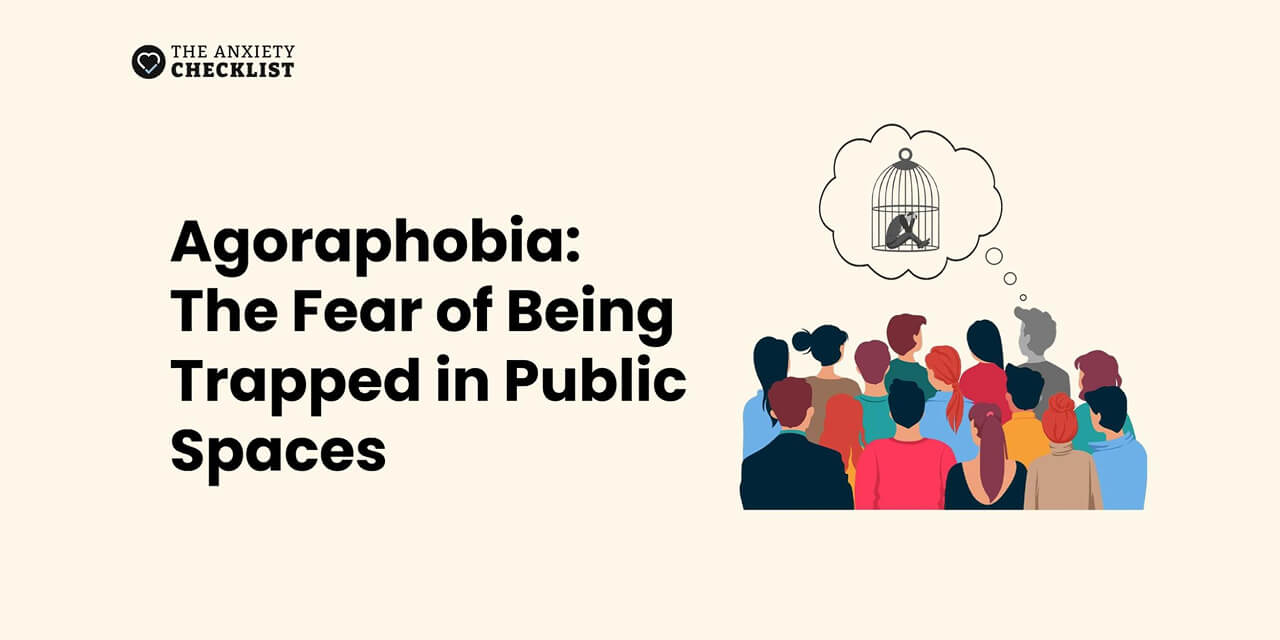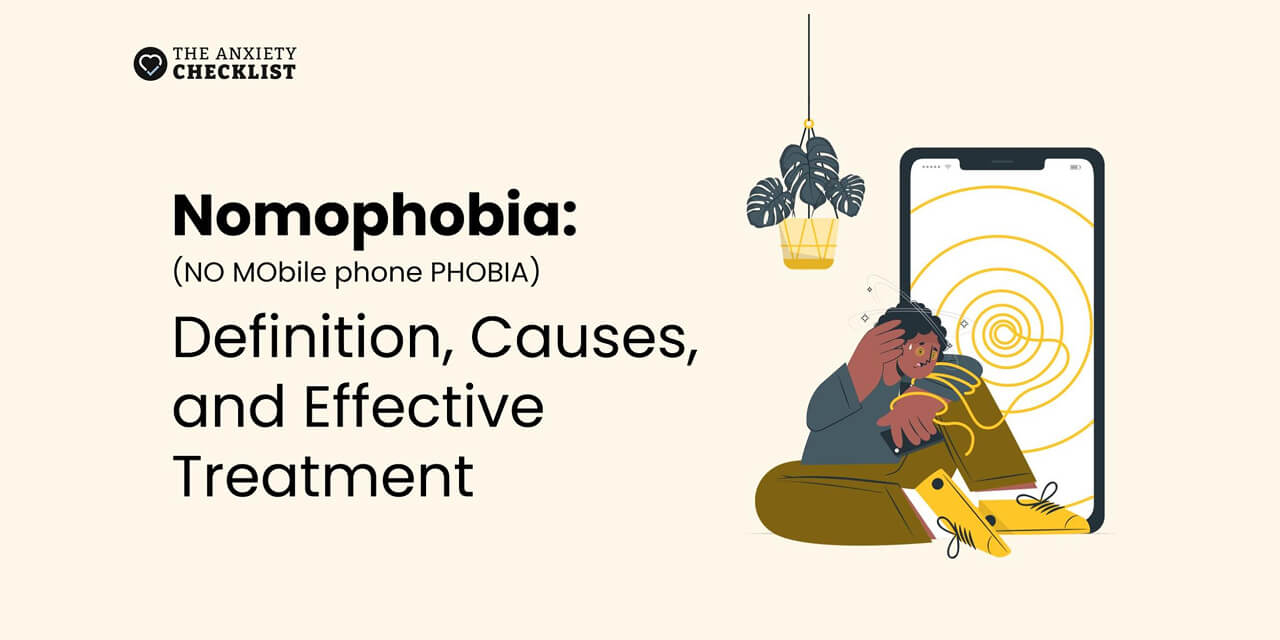What Is Agoraphobia?
Symptoms of Agoraphobia
Understanding the symptoms of any anxiety disorder is always the first step in managing it. Symptoms range from mild discomfort in certain places to full-blown panic attacks.
These symptoms can interfere with your relationships, work, and daily activities. Left untreated, they may create a cycle of anxiety and avoidance that becomes harder to break over time.
Symptoms of agoraphobia, like most anxiety disorders, usually fall into these three main categories:
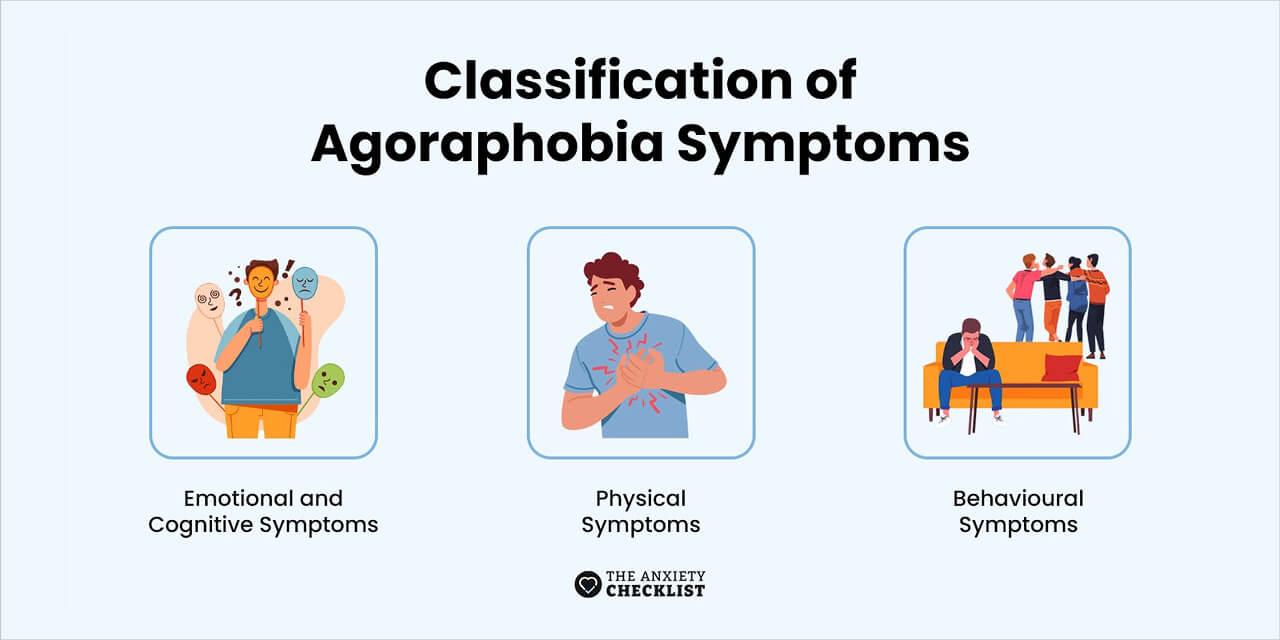
Emotional and Cognitive Symptoms
These are the internal experiences that shape how people with agoraphobia think and feel. Cognitive distortions often center on fear: fear of losing control, being judged, or having no escape.
These thoughts can intensify anxiety and lead to patterns of avoidance that are hard to break.
These symptoms include:
Physical Symptoms
While agoraphobia starts in the mind, its effects are often felt throughout the body. These physical responses often mimic those of a panic attack and can make the fear feel even more real and intense in the moment.
These physical symptoms are:
Behavioral Symptoms
To manage anxiety, people with agoraphobia often change the way they live day to day.. These behavioral patterns can limit independence and make daily life difficult. Over time, they can lead to increased isolation and dependence on others.
These behavioural changes include:
Is anxiety holding you back from the life you deserve?
Risk Factors and Causes
Agoraphobia usually doesn’t stem from a single cause. Instead, it often develops from a mix of biological, psychological, and environmental factors. While anyone can develop agoraphobia, certain traits and circumstances may increase your chances of developing it.
Recognizing these risk factors can offer insight into how agoraphobia begins and why it might affect some people more than others. It can also help you or someone close to you make sense of the patterns behind the anxiety.
While the following traits or life experiences don’t guarantee the condition will develop, these are common risk factors that raise the likelihood of developing agoraphobia:
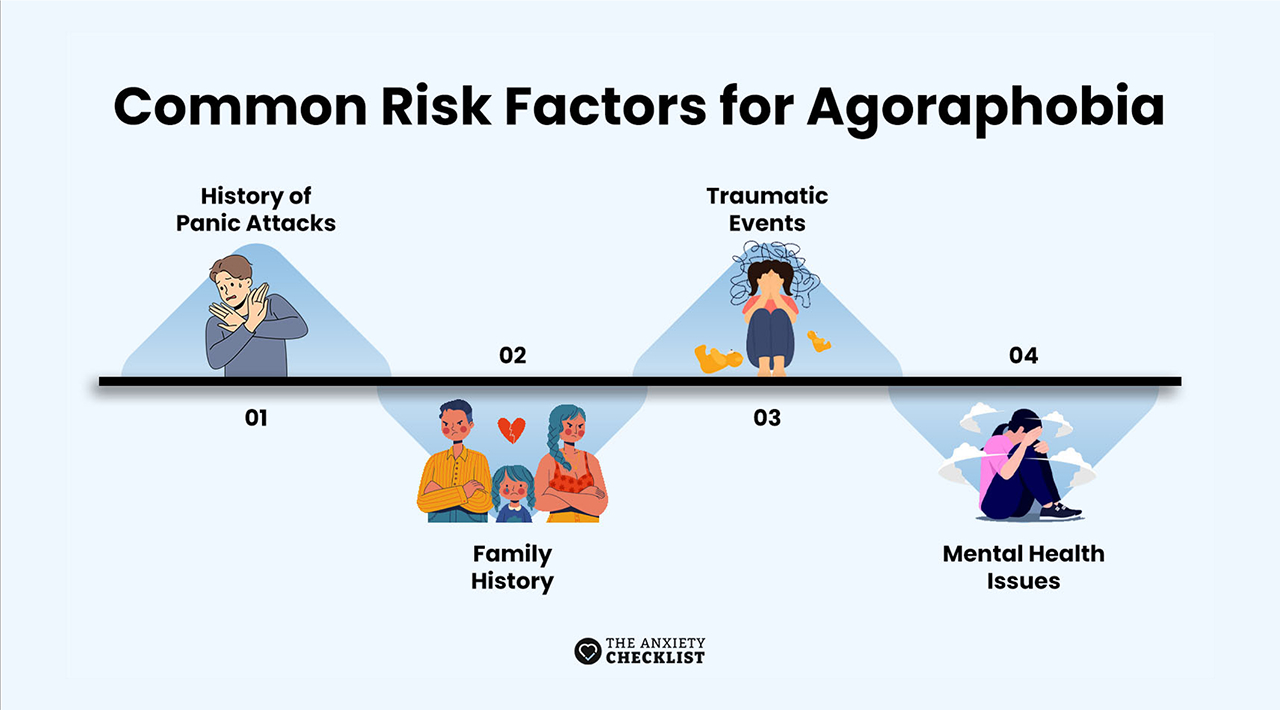
History of Panic Attacks
Agoraphobia often develops in people who already struggle with panic disorder. The intense fear of having a panic attack in public, especially without help, can lead to avoidance of these situations altogether.
Family History
Mental health conditions, including anxiety disorders, tend to run in families. According to a study by Cambridge University, if a close relative has agoraphobia, panic disorder, or generalized anxiety, you may be at higher risk of developing agoraphobia yourself.
Traumatic Events
Difficult life experiences like the death of a loved one, serious illness, abuse, or a bad accident can contribute to the development of agoraphobia, especially when these traumatic events create a sense of loss, fear, or helplessness.
Mental Health Issues
Conditions like depression, generalized anxiety disorder, or PTSD can make you more susceptible to agoraphobia. They can also complicate how agoraphobia presents itself and how it’s treated.
The Role of Panic and Avoidance in Agoraphobia
Agoraphobia often begins after a person experiences one or more intense panic attacks in a public place. The panic itself is terrifying, but what sticks is the memory of feeling unsafe, exposed, or out of control.
From there, the brain begins to form associations like “That place triggered panic. I need to avoid it.” Over time, these mental associations widen to include similar locations or situations.
Eventually, the fear of fear becomes the real issue, where you’re no longer just afraid of being in public, but afraid of having a panic attack in public. This leads to a pattern of avoidance that reinforces the anxiety and shrinks your sense of freedom.
Diagnosis and Tests
Agoraphobia can go undiagnosed for years, mainly because people usually do not seek help until their symptoms start severely affecting their daily life. Along the way, they might hear things like, “You’re just being dramatic,” or “You just need to try harder.” But agoraphobia isn’t a personality flaw. It’s a real anxiety disorder.
Getting the right diagnosis is the first step toward getting the right kind of help. If you think you might have agoraphobia, consider speaking with a healthcare professional, such as a psychologist, general practitioner, or psychiatrist for anxiety diagnosis.
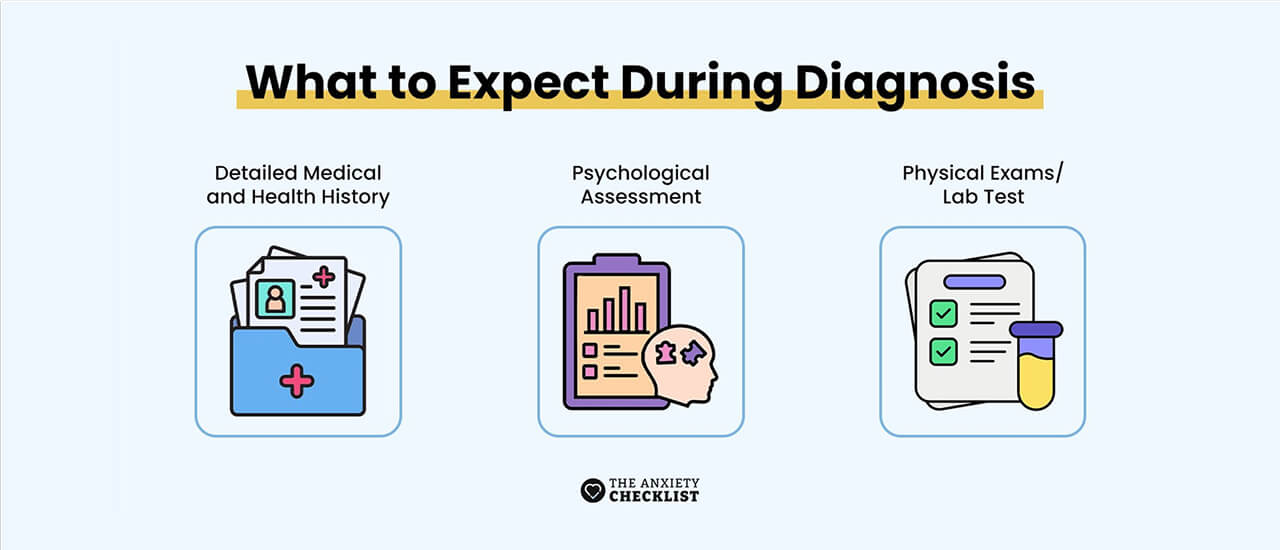
Here’s what that process typically looks like:
- A Detailed Medical and Mental Health History: You’ll be asked about your symptoms, when they began, what triggers them, and how they affect your daily life. Expect questions like, “Are there places you avoid?” or “Do you ever feel unsafe when you’re away from home?”
- Psychological Assessment: This can involve structured interviews or questionnaires designed to help identify agoraphobia, panic disorder, or other anxiety-related conditions.
- Physical Exam or Lab Tests (if needed): Sometimes physical symptoms like dizziness or chest pain could be linked to a medical issue. Doctors may run tests to rule out heart conditions, thyroid problems, or other issues that can mimic anxiety symptoms.
Diagnostic Criteria
Agoraphobia is treatable with the right approach. Getting a formal diagnosis is an essential first step toward reclaiming your life. With the right support, you can begin to understand your triggers, manage your fears, and move toward healing.
To be officially diagnosed with agoraphobia, your symptoms must meet the criteria outlined in the Diagnostic and Statistical Manual of Mental Disorders (DSM-5).
The criteria include:
Management and Treatment
Agoraphobia is treatable, and many people see major improvements with time and effort. With the right approach, support, and tools, the cycle can be broken.
The best treatment plan for you will depend on your unique symptoms, personal preferences, and any other mental health conditions you may be managing. Treatment usually includes a mix of the following:
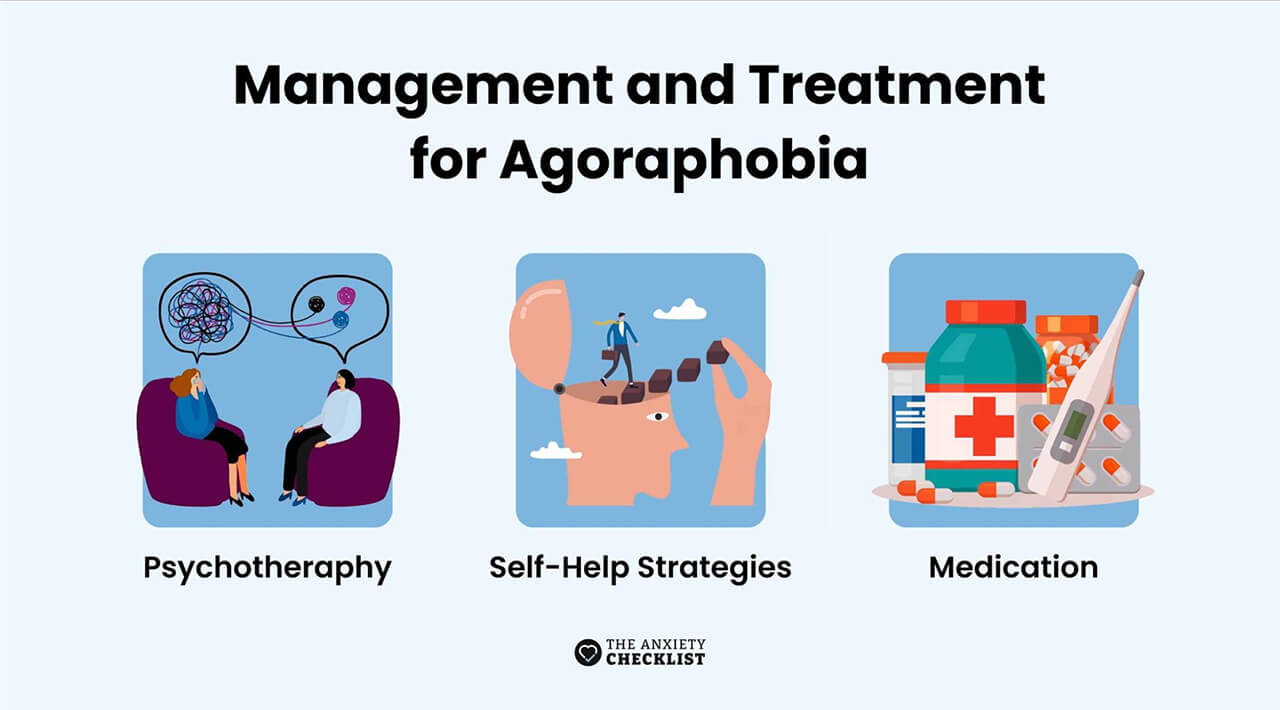
Psychotherapy
Therapy is often the first and most effective treatment for agoraphobia. It focuses on understanding your fears, challenging anxious thoughts, and gradually building confidence in situations that might feel overwhelming. Psychotherapy can help identify anxiety triggers and develop a coping strategy.
The following therapy approaches are commonly used:
Cognitive Behavioral Therapy (CBT)
CBT is widely recognized as one of the most effective treatments for agoraphobia. CBT can help you identify negative thought patterns and replace them with more balanced, realistic ones. Through CBT, you also learn coping techniques to manage anxiety when it arises.
Exposure Therapy
This structured form of CBT gradually introduces you to anxiety-inducing situations in a safe, supportive way. Over time, exposure therapy helps your brain learn that the danger you fear is neither real nor as bad as imagined.
Virtual Therapy
Online therapy and mobile apps are becoming increasingly popular, especially for those who find it difficult to leave home for appointments. These tools provide convenient access to support from the comfort of your own space, making it easier to start treatment and stay consistent with sessions.
Medication
For some people, therapy alone may not be enough, especially if panic symptoms are severe or daily functioning is significantly affected. In these cases, medication can be recommended to help regulate anxiety levels.
Professionals may prescribe the following anti-anxiety medications:
Many people with agoraphobia prefer to focus on therapy and support rather than medication, and that’s a valid choice. However, for other people, medication can offer short-term relief from intense symptoms, making it easier to participate in therapy and manage daily activities.
Self-Help Strategies
Small steps always make a big difference. These self-directed tools can help you manage symptoms between therapy sessions and during recovery:
Breathing techniques and relaxation exercises
Deep breathing exercises, progressive muscle relaxation, and guided imagery can calm your body and mind during anxious moments.
Lifestyle changes
Regular exercise, good sleep, and a balanced diet all support mental health. Reducing caffeine and alcohol intake may also reduce anxiety spikes.
Building a support network
Stay connected with trusted friends or family members who understand your journey. Isolation can make symptoms worse.
Education and journaling
Learning about your condition and tracking your progress helps you stay aware of triggers and victories, no matter how small they are.
Frequently Asked Questions
Agoraphobia is more about the fear of being stuck or unsafe, regardless of whether others are present. These two conditions can overlap, but they are distinct.
Additionally, Support groups, online therapy platforms, and anxiety-focused mental health websites like Anxiety Checklist also offer valuable resources.
Conclusion
Previous Article
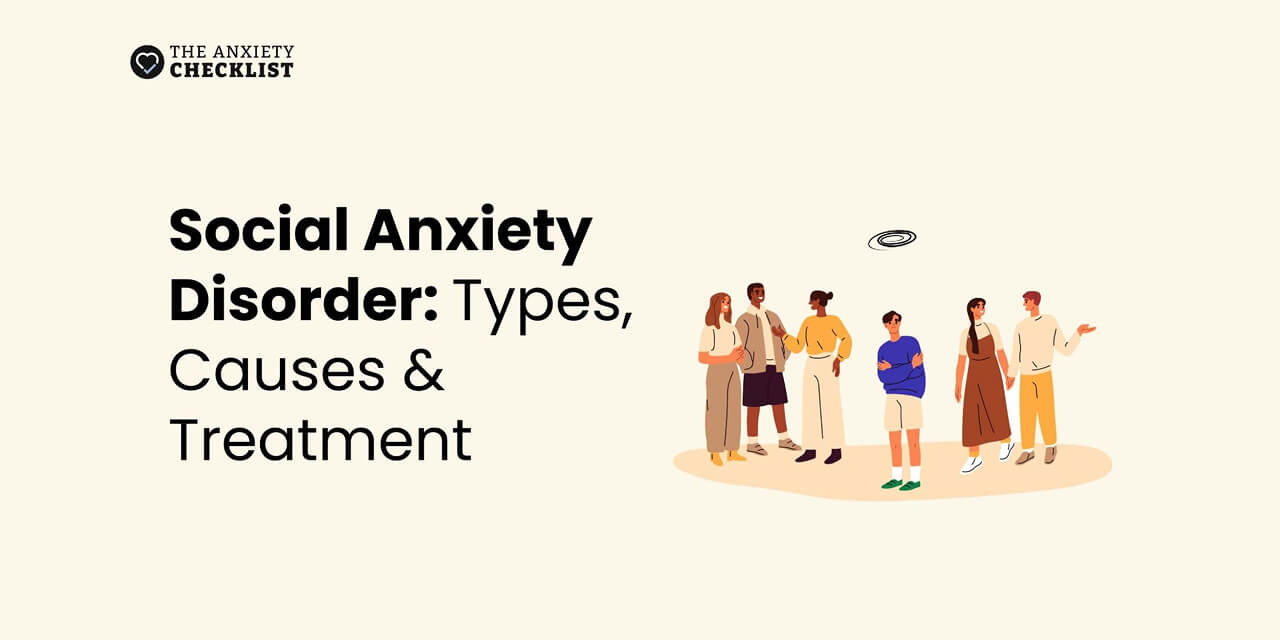
Social Anxiety Disorder: Types, Causes & Treatment

Advertisement
BetterHelp
BetterHelp makes starting therapy easy. Get a tailored therapist match based on your needs and preferences - in as little as 24 hours!
Enjoy 20% off your first month with code "anxietycheck"

4 million+ Helped
Access Therapy 24/7
Preferred by 94% of users
If you are in a crisis or any other person may be in danger - don't use this site. These resources can provide you with immediate help.


